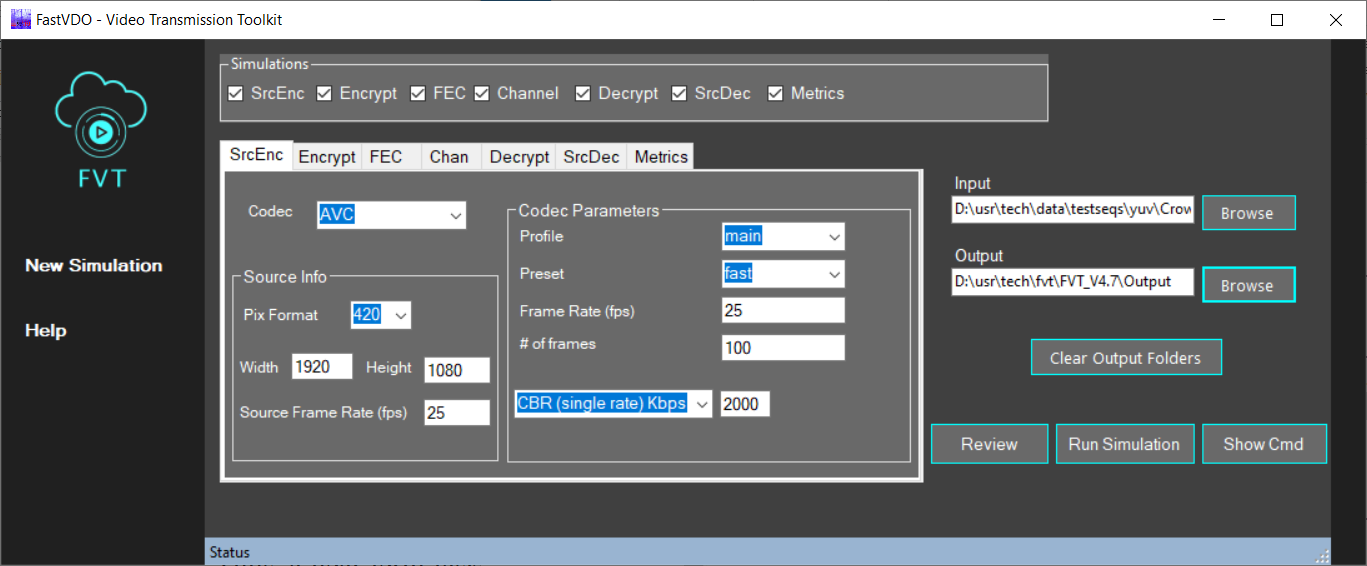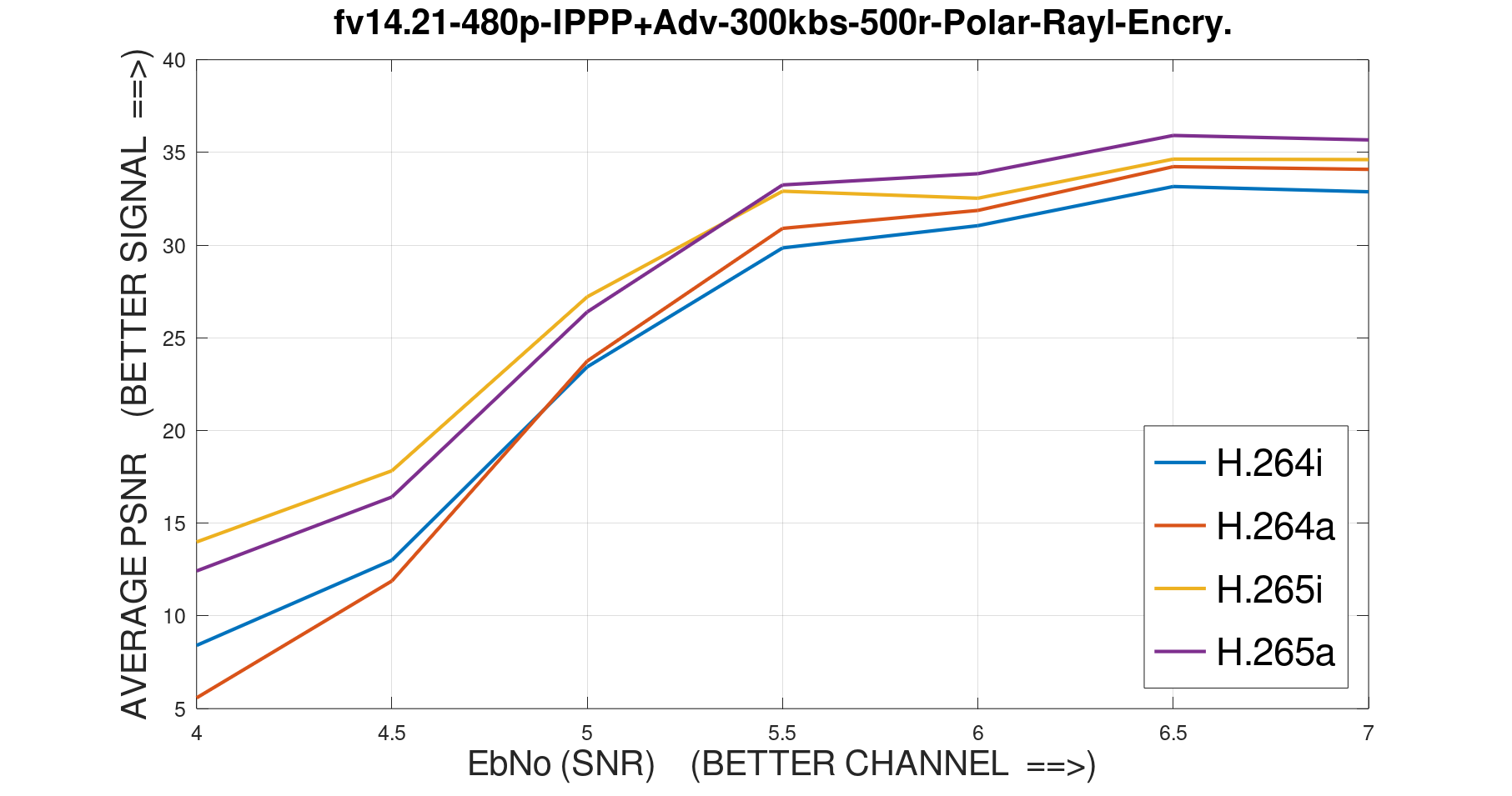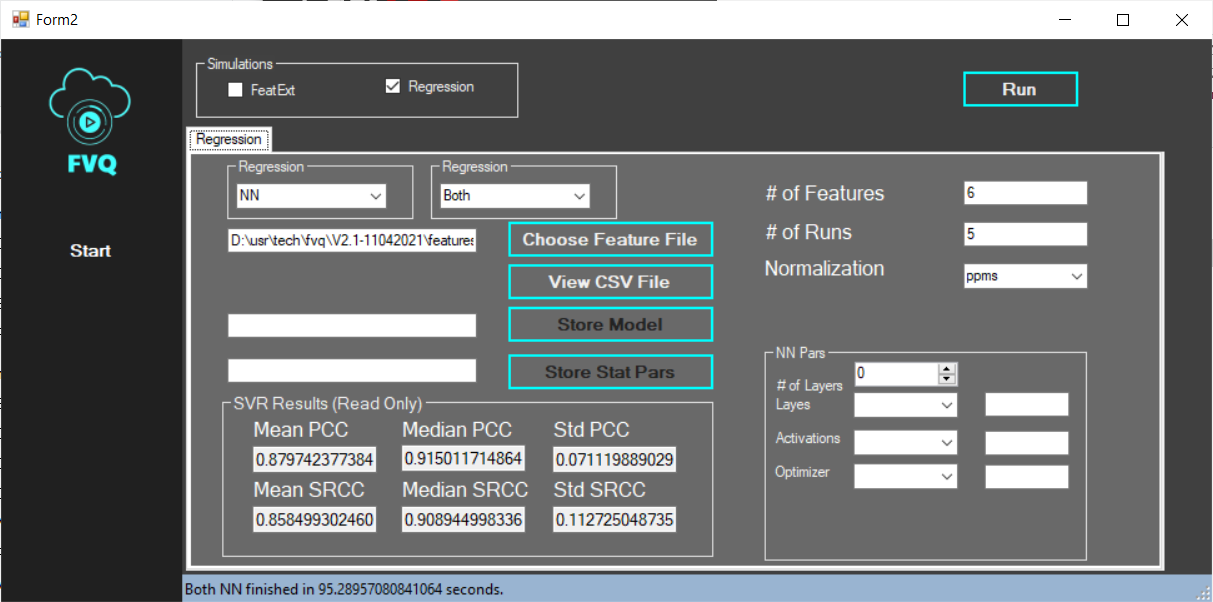

Products: FastVDO Transmission (FVT), FastVDO Quality (FVQ)
FastVDO Transmission Toolkit (FVT)
FVT is a powerful, intuituve GUI based video transmission simulation toolkit, incorporating source coding and decoding, encryption, forward-error correction, and lossy channel simulation. It supports a wide variety of video source codecs: H.264/AVC, H.265/HEVC, and the latest H.266/VVC! (thanks to code release from Fraunhofer HHI), as well as a large variety of channel codecs (LDPC-5G, Polar, Turbo, among others). The channel simulator supports both Additive White Gaussian Noise (AWGN) as well as Rayleigh fading channel models. Set the channel error level (Eb/No) as desired. The Pro version further supports a variety of loop functionalities, including bitrates, channel SNR ranges, as well as number of simulations, that allow for generating statistically significant results at the click of a button. Run hundreds of simulations automatically with different combinations of bitrates and EbNo values, all with a few clicks! View the output metrics or the output videos themselves for each simulation for comparison. An example result is shown below, averaging PSNR results from 500 simulations of transmitting a test aerial drone video, using H.264 and H.265 codecs, in a Rayleigh fading channel, with channel SNRs in the range 4.0 - 7.0 dB, using AES-256 bit encryption, and using Polar FECs.


FastVDO Quality (FVQ)
FVT is a powerful and intuitive full-reference video quality assessment (FR FVQ) tool. It takes as a point of departure the well-known Video Multi-Algorithm Fusion (VMAF) approach developed by Netflix, but enhances the motion feature to measure the true motion loss of the processed video relative to the original. It also enhances the basic support vector regression to be a parametric regressor, or a full-fledged neural network. This allows our method, called simply FastVDO Quality (FVQ) to meet or even exceed VMAF on certain subjective test databases in terms of producing quality ratings with predictive power to actual viewer quality ratings, according to the well-known Pearson Linear and Spearman Rank Order Correlation Coefficients (PCC and SRCC, respectively). Input a video or a directory of videos, compute features, and regress quality scores, all in one simple, GUI-based application, and train your own powerful full-reference VQA for your applications.
